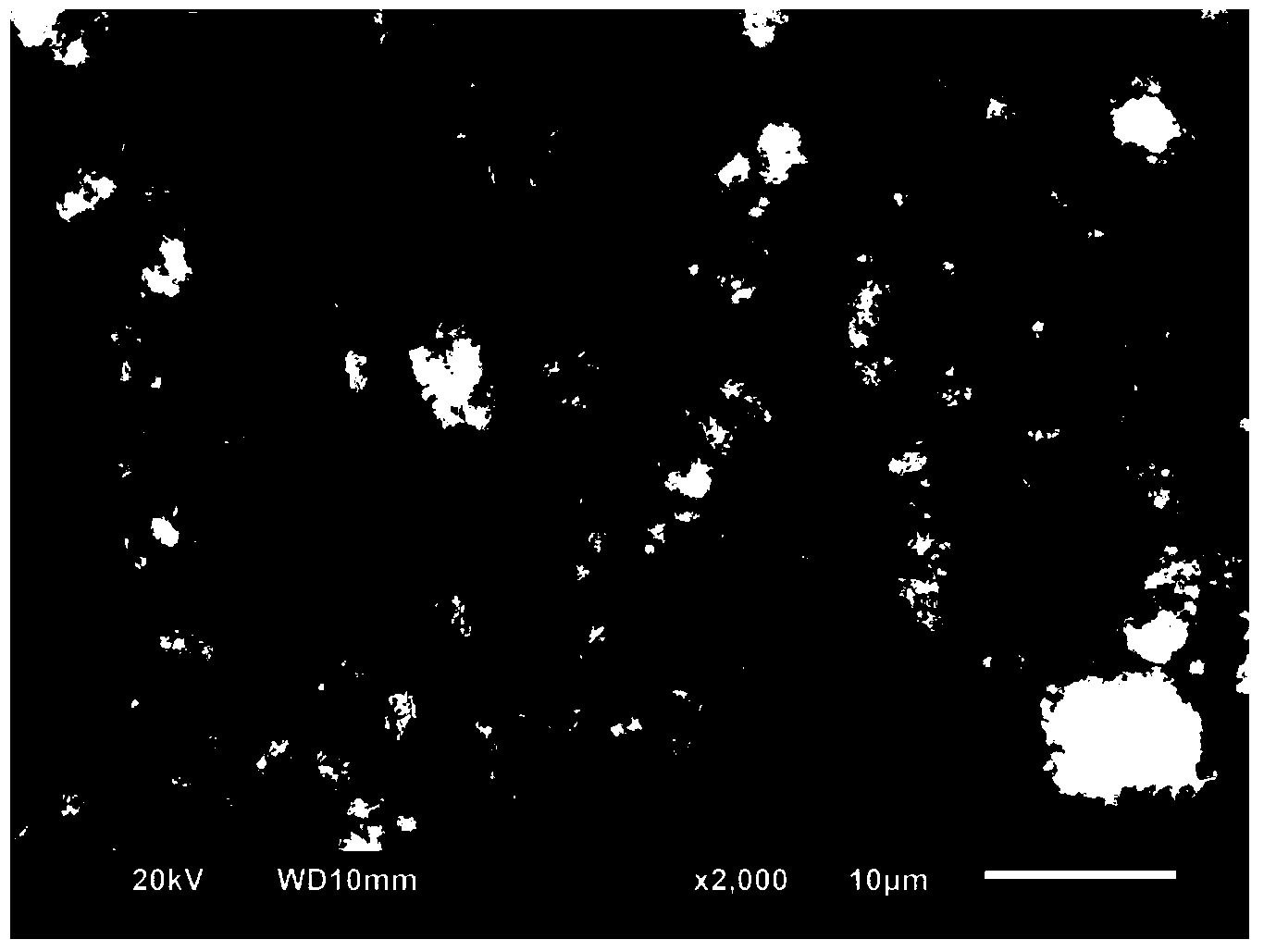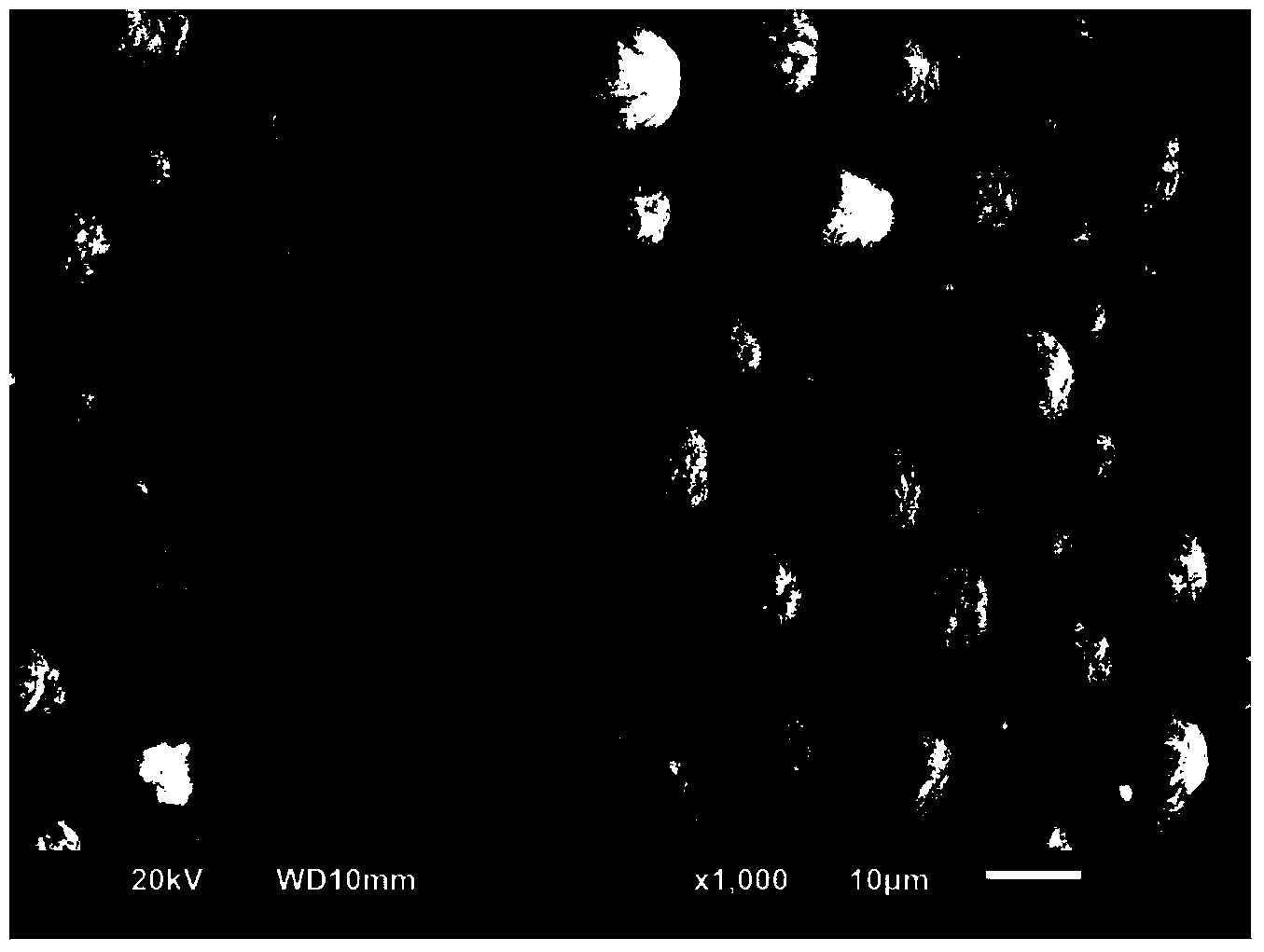Method for preparing nickel-cobalt-manganese ternary material precursor
A ternary material and precursor technology, applied in electrical components, electrochemical generators, battery electrodes, etc., can solve problems such as increased production costs and waste of resources, and achieve improved tap density, low production equipment requirements, and easy industrialization. The effect of mass production
- Summary
- Abstract
- Description
- Claims
- Application Information
AI Technical Summary
Benefits of technology
Problems solved by technology
Method used
Image
Examples
preparation example Construction
[0054] According to the method for preparing nickel-cobalt-manganese ternary material precursor provided by the present invention, it has the following advantages:
[0055] (1) The method provided by the present invention can comprehensively utilize the small particle waste of the precursor of the ternary material produced in the production process, improve the raw material utilization rate of the ternary material in the production process, realize the full utilization of raw materials, and avoid the waste from being Waste of resources and cost increase due to waste;
[0056] (2) The content of the nickel-cobalt-manganese ternary material precursor with a particle size of 7 to 15 microns in the product is more than 95%, and the tap density of the precursor is more than 2.3g / cm3, which can improve the ternary cathode material. Tap density and cycle performance of follow-up lithium batteries;
[0057] (3) The method provided by the present invention is simple to operate, has low
Embodiment 1
[0060] Steps:
[0061] (1) A mixed solution of nickel sulfate, manganese sulfate and cobalt sulfate (the total concentration of the mixed solution is 2mol / L, of which Ni 2+ , Mn 2+ and Co 2+ The concentration ratio is 1:1:1), the NaOH solution with a concentration of 3mol / L and the ammonia solution with a concentration of 3mol / L are added to the reactor in parallel, the reaction temperature of the reactor is 60°C, and the stirring speed is 1300r / min. The pH of the system is 11, and Ni with a D50 particle size of 4 microns 1 / 3 co 1 / 3 mn 1 / 3 (OH) 2 Ternary material precursor particles (electron micrographs such as figure 2 shown) into the reaction kettle at a rate of 2ml / min, and the liquid overflows naturally;
[0062] (2) Input the material liquid overflowed and discharged in step (1) to the filter device for filtration and washing until no by-product salt sodium sulfate remains, then transfer to the drying device, dry at 110°C for 3 hours, and then pulver
Embodiment 2
[0065] Steps:
[0066] (1) A mixed solution of nickel sulfate, manganese sulfate and cobalt sulfate (the total concentration of the mixed solution is 2mol / L, of which Ni 2+ , Mn 2+ and Co 2+ The concentration ratio is 5:3:2), the NaOH solution with a concentration of 4mol / L and the ammonia solution with a concentration of 3mol / L are added to the reactor in parallel, the reaction temperature of the reactor is 60°C, and the stirring speed is 1300r / min, to control the reaction The pH of the system is 11, and Ni with a D50 particle size of 5 microns 0.5 co 0.2 mn 0.3 (OH) 2 The ternary material precursor particles are added to the reaction kettle at a rate of 3ml / min, and the liquid overflows naturally;
[0067] (2) Input the feed liquid overflowed and discharged in step (1) to a filter device for filtration and washing until no by-product salt sodium sulfate remains, then transfer to a drying device, dry at 120°C for 4 hours, and then pulverize to obtain Ternary mat
PUM
| Property | Measurement | Unit |
|---|---|---|
| Particle size | aaaaa | aaaaa |
| Particle size | aaaaa | aaaaa |
Abstract
Description
Claims
Application Information
 Login to view more
Login to view more - R&D Engineer
- R&D Manager
- IP Professional
- Industry Leading Data Capabilities
- Powerful AI technology
- Patent DNA Extraction
Browse by: Latest US Patents, China's latest patents, Technical Efficacy Thesaurus, Application Domain, Technology Topic.
© 2024 PatSnap. All rights reserved.Legal|Privacy policy|Modern Slavery Act Transparency Statement|Sitemap



